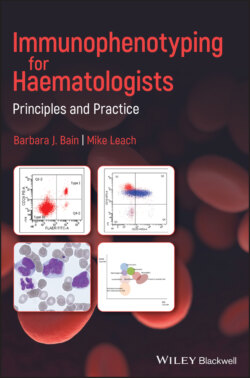Читать книгу Immunophenotyping for Haematologists - Barbara J. Bain, Irene Roberts - Страница 11
Problems and Pitfalls
ОглавлениеClearly technical errors can lead to erroneous results of immunophenotyping. Rigorous quality control is required. Inappropriate selection of antibodies and erroneous interpretation can result from inadequate clinical information being provided or from failure to examine a film of the peripheral blood or bone marrow aspirate that is to be tested. Delays in transportation of a sample to the laboratory can lead to cell death and make testing of the sample unwise since results are likely to be misleading.
Errors in interpretation can occur if the results of immunophenotyping are not integrated with clinical, haematological, cytogenetic and genetic information. Not all cases of a specific condition will have a typical immunophenotype and, in some entities, the immunophenotype is not distinctive.
In certain circumstances flow cytometry of a bone marrow aspirate will show no abnormality despite a neoplastic infiltrate being present. This is likely to occur when there is diffuse or focal bone marrow fibrosis, when the aspirate is of low cellularity and when neoplastic cells are infrequent, fragile or dead. Findings are typically negative in Hodgkin lymphoma where the disease cells, Hodgkin and Reed–Sternberg cells, are present at a low frequency amongst a reactive environment of lymphocytes, plasma cells and eosinophils with associated reticulin fibrosis. In these circumstances it is trephine biopsy histology and immunohistochemistry that yield the diagnosis. It is therefore important not to exclude a diagnosis completely based solely on the results from one approach, particularly where the specimen quality is poor. No single investigation in isolation is infallible – by correlating the results of several investigations using different modalities, a unifying diagnosis can be achieved.
